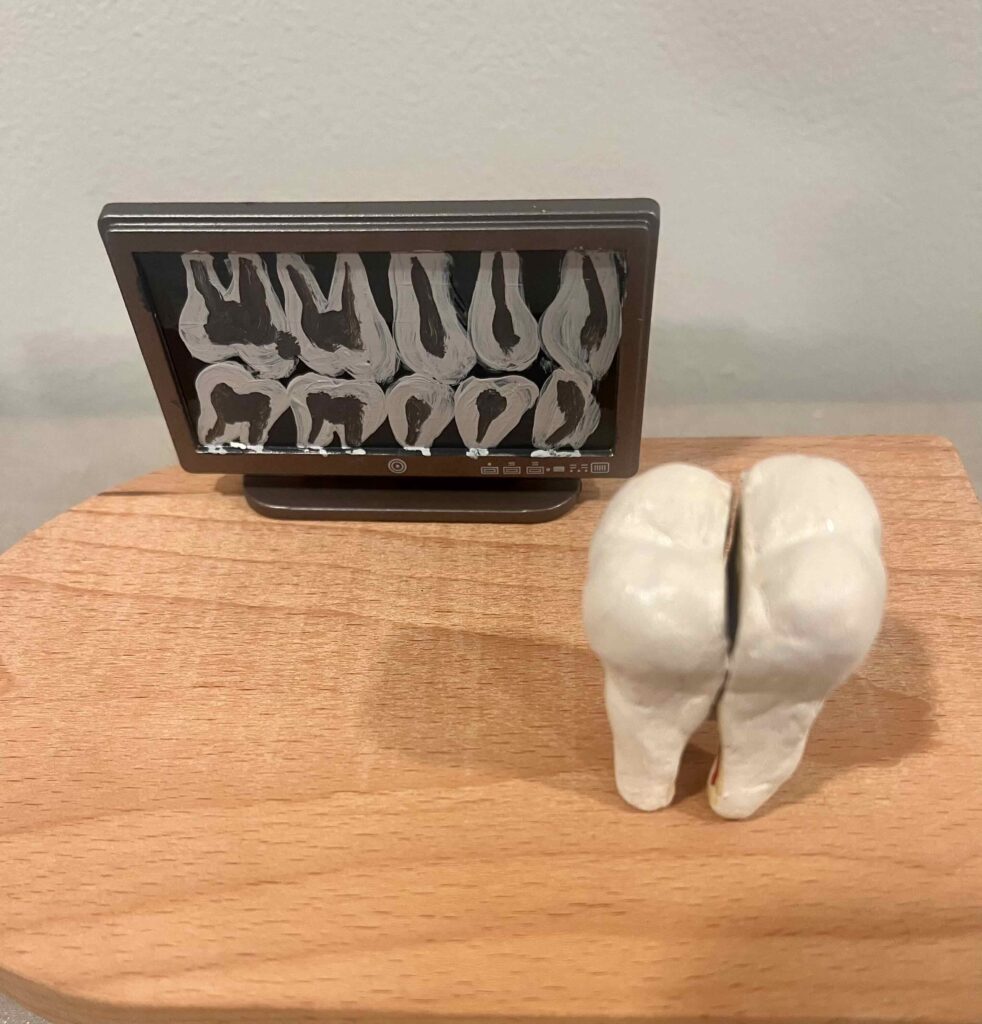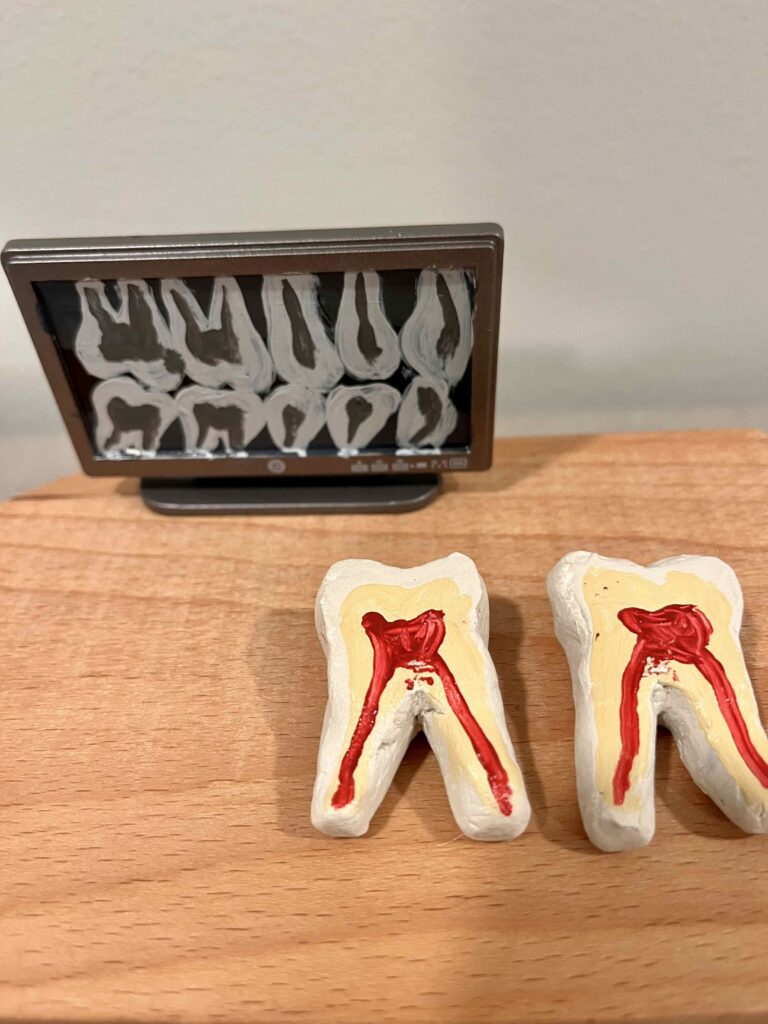STEAM Project
20/11/2023
There Are More to Teeth Than You Know
Teeth are the first thing you look at when someone smiles, speaks, or just when they open their mouth. It is the makeup of the face. These pearly whites are more than just an eye catcher; they grind up our food to make it digestible, they help us speak, and keep our mandible jaw intact. Teeth are the oldest bones we have in our body, but did you know that teeth are not classified as bones? There’s more to teeth than just three layers of bone; they have a joint that holds them into place, nerves to keep the tooth alive, and protective layers that protects its insides.
The tooth sits in a peg socket and in that socket lies the joint, gomphoses. This joint has a connective tissue called fibrous which is attached to the periodontal ligament that connects the tooth to the socket. (Hubbard et al., 2023). The periodontal ligament attaches the teeth to the surrounding alveolar bone and acts as a shock absorber during biting and chewing. Cementum covers the root surface and helps anchor the periodontal ligament fibres. The alveolar bone forms the tooth sockets (alveoli) and provides a stable foundation for the teeth (Robert, 2023). This joint is considered a synarthrosis because it is completely immovable, unless wiggled out using the right dental instruments. Gomphoses is found in between the teeth and their sockets. It anchors the root of the tooth into the socket but if you do not take care of your teeth, you could develop several diseases.
One disease that harms the joint would be periodontal disease. Periodontal infection causes inflammation and abscesses which damages the joint, causing pain and erosion in the soft tissue. This loosens the ligaments and will cause the teeth to become loose. The other disease that attacks the joint directly is scurvy. This disease comes from a lack of vitamin C and could deteriorate the joint (Hirschmann & Raugi, 2005). If scurvy or periodontal disease, does not get correctly treated the connective tissues and ligaments around the teeth will begin to dissolve. It’s important to do more than just brushing twice a night; you need to visit the dentist at least twice a year because your teeth will need proper cleanings that only a registered hygienist can do.
There are more important things to teeth than their anchors/joints. The tooth itself is very fragile and has layers that protects the tooth. The visible part of the tooth above the gumline is called the crown, and the part below the gumline is known as the root. The enamel, the hardest substance in the human body, covers the crown and protects the tooth from wear and tear. The dentin is the next layer and lies beneath the enamel. It makes up most of the tooth structure. It is a living tissue that contains microscopic tubules connecting to the innermost part of the tooth called the pulp. The pulp is composed of blood vessels, nerves, and connective tissues that provides nourishment to the tooth during its development. The pulp goes from the crown of the tooth to the roots which are known as the root canals. The canals connect the pulp to the tissues and allows nutrients and sensory to travel through the tooth, bringing the tooth to life (Robert, 2023). If you think about it, the tooth is like a peanut M&M. The hard outer shell of the candy is the enamel, the soft chocolate is the dentin, and the most nutritious part, the peanut, is the pulp of the tooth.
These layers help protect the nerves in our teeth and when sugar or something acidic gets on them it takes away some of the minerals from our enamel and that can cause a cavity. If the cavity gets past the enamel and into the dentin due to non-treatment that can cause sensitivity because the dentin is very close to the nerves. If the cavity stays on the dentin too long then you will no longer need just a filling, you will a root canal because now the nerves are infected. If this goes untreated than the cavity will keep eating at the nutrients around it and will cause the tooth to become brittle and loose. The joint will become weak due to the cavity and will have nothing to hold on because the bone around it will decrease and cause the tooth to fall out.
It is very important to keep our teeth healthy because as you see teeth have a lot more to them than just a crown that sticks out of your gums. Taking care of the enamel, dentin, and pulp will help keep the teeth anchored and stay in the socket. Flossing and brushing will keep those diseases away and prevent periodontal disease, scurvy, cavities, and more. An infection in the tooth can go to the extreme and cause a major infection that can get into the bloodstream and infect the blood vessels and later could cause death. Remember, teeth are not bones, they are joints and they are very much “alive”.
Reference Page
Robert, Jain. (2023). Dental Anatomy Understanding the Structure and Function of Teeth. https://www.openaccessjournals.com/articles/dental-anatomy-understanding-the-structure-and-function-of-teeth-16446.html
Hubbard, John B., Juneja, Pallavi, Munjal, Akul. (2023). Anatomy, Joints. https://www.ncbi.nlm.nih.gov/books/NBK507893/
Hirschmann, J.V., Raugi, Gregory J. (2005). Adult scurvy. https://www.sciencedirect.com/science/article/abs/pii/S0190962299702446


